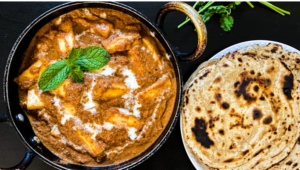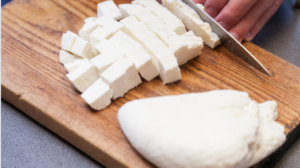
Paneer: The Versatile Star of Indian Vegetarian Cuisine
While paneer is ubiquitous in Indian households today, its origins trace back to ancient traditions of curdling buffalo milk into a soft, non-aged cheese. Widely beloved across North India and neighboring regions like Afghanistan, Nepal, Bangladesh, and Pakistan, paneer has cemented its status as a culinary icon. Known for its mild flavor and adaptability, paneer integrates seamlessly into various regional dishes, showcasing its versatility in every bite.
In North India, paneer takes center stage in creamy delicacies like Paneer Butter Masala and Palak Paneer, complementing robust spices and tender spinach. Eastern cuisine celebrates paneer in dishes such as Chhanar Dalna, where it enriches potato and tomato-based gravies with its creamy texture. Moving westward, Paneer Bhurji emerges as a favorite, blending scrambled paneer with aromatic onions, tomatoes, and chilies. Down south, paneer finds its place in dosas and stir-fries, providing a protein-rich foundation to these flavorful creations. Whether grilled for tikka, marinated in kebabs, or crumbled into salads, paneer’s adaptability makes it a cherished ingredient nationwide.

Paneer: The Versatile Star of Indian Vegetarian Cuisine
2-Ingredient Paneer Recipe
Ingredients:
– 1 liter whole milk (cow or buffalo milk)
– 2-3 tablespoons lemon juice or vinegar
– 1 cheesecloth or muslin cloth
Instructions:
1.Boil the Milk:
– Heat the milk in a heavy-bottomed pan until it comes to a gentle boil, stirring occasionally to prevent scorching.
- Add the Souring Agent:
– Reduce the heat to low once the milk boils.
– Add 2 tablespoons of lemon juice or vinegar, stirring gently. If the milk doesn’t curdle immediately, add another tablespoon.
3.Curdling the Milk:
– Allow the milk to curdle for 1-2 minutes, separating into curds (solid white lumps) and whey (greenish liquid). Add more lemon juice or vinegar if needed.
- Strain the Curds:
– Line a colander or strainer with cheesecloth and place it over a bowl or sink.
– Carefully pour the curdled milk into the cloth, allowing the whey to drain out. Save the whey for other recipes if desired.
- Rinse the Curds:
– Rinse the curds under cold running water briefly to remove any residual sour taste from the lemon juice or vinegar.
- Drain and Press the Paneer:
– Gather the cheesecloth edges and twist to squeeze out excess whey.
– Tie the cloth tightly and place it on a flat surface with a heavy object (e.g., pot or can) on top to press the paneer. Press for 30 minutes to 1 hour.
- Cut and Store:
– Unwrap the paneer and cut it into desired shapes or cubes.
– Use immediately in recipes or store in an airtight container in the refrigerator for up to a week.
Paneer is not just versatile but also a nutritional powerhouse, rich in protein, calcium, and healthy fats. It supports muscle growth, bone health, and provides essential vitamins like vitamin D and B-complex vitamins. With its low carbohydrate content, paneer is particularly beneficial for those managing their carb intake, making it an ideal choice for vegetarians seeking a balanced diet that promotes overall wellness and fitness.






















